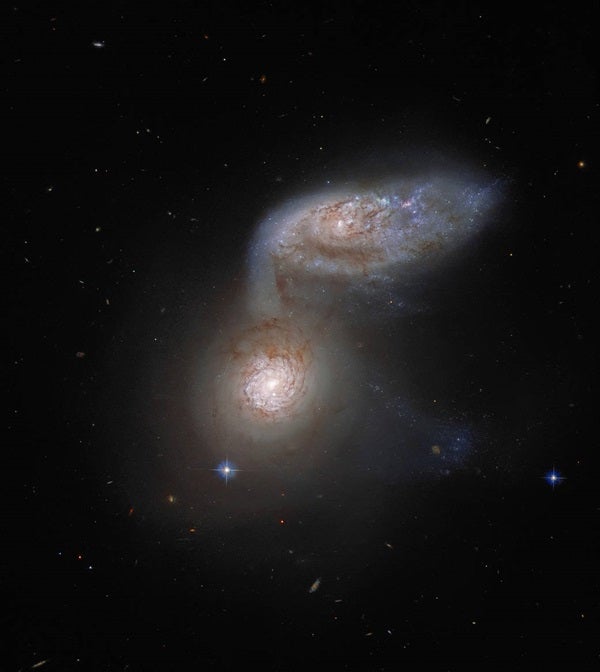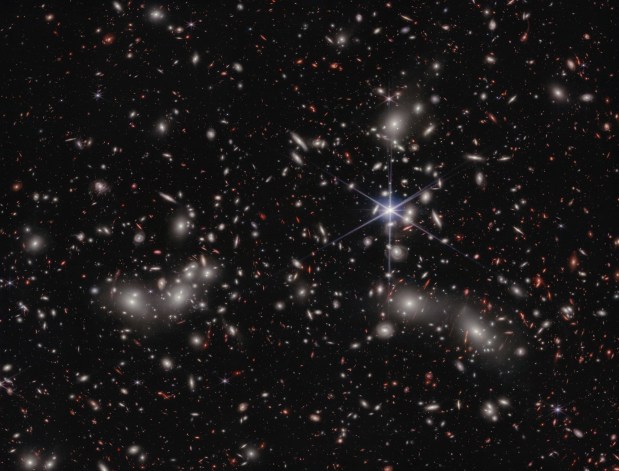The gravitational pull of lower galaxy seen in this Hubble image, NGC 5953, is dragging NGC 5954 down toward it, creating a bridge of stars, gas, and dust between them. The two galaxies live 100 million light-years from Earth, and as the galaxies continue to tug on each other, the shape of Arp 91 continues to evolve.
However, massive galaxy collisions like this one take place over many millions or billions of years, meaning we will never see Arp 91 morph during our lifetimes. Still, galaxy collisions are quite common throughout the cosmos, so astronomers can assemble many snapshots and piece together a pretty good timeline detailing how such collisions play out.
In fact, our own Milky Way will one day collide with our neighbor, the Andromeda galaxy. Such collisions typically form a new, bigger, largely featureless type of galaxy called an elliptical. Elliptical galaxies are often found near the centers of galaxy clusters, and they are generally thought to be the product of galaxy mergers just like Arp 91.
The cosmos may always be changing, but it’s often at a pace that’s far too slow for us to observe. In this case, at least, we get a brief glimpse at the wonderful, eternal galactic union of Arp 91.










